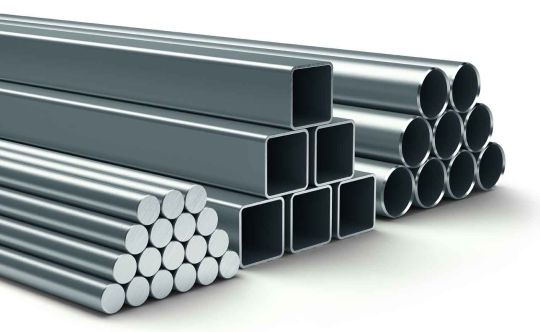Steel
All the plans in this website are based on using HSS (Hollow Structural Steel) in both square (SHS) and rectangular (RHS) for the chassis, and angle iron, flat bar, panel steel and pipe for various other components. All hollow sections used need to conform to the following standards - ASTM A-500 and CSA G-40.21-92.
I prefer to use hollow sections over angle for trailer manufacture for a couple of reasons. Hollow sections tend to be lighter without compromising strength, they are kinder on cutoff blades and grinders (less wear and tear on the blades and machines) and I find hollow section excellent to work with.
If, for whatever reason the trailer gets damaged, hollow sections tend to flex and stretch, which reduces damage to other parts of the trailer chassis. This makes it easier and quicker to replace sections and repair the trailer.
All hollow sections steels are ERW pipe (Electric Resistance Welding) before being formed into square or rectangular section, but do not confuse this with specified ERW tubing which is a furniture grade hollow section and should never be used on a trailer unless for cosmetic purposes (for example, a lightweight crate or riser sides).
Downgrade or seconds/reject steel should never be used.
Primed (painted) hollow section is available from some steel merchants and this can be advantageous if you intend to paint your finished trailer. Do not use primed steel product on a trailer that is to be galvanized. Most galvanizers require the paint to be stripped prior to galvanizing. Also be cautious of the fumes produced when welding primed steel and wear a respirator whilst welding.
Panel steel is either hot rolled (usually in the heavier thicknesses) or cold rolled. Both are suitable for panel components on a trailer. Some suppliers will be able to supply panel steel cut to length and deliver it to your choice of engineer for additional cutting and folding. If this facility is not available, standard sheet sizes should be available. (4' x 8')
For steel supply, shop around different engineering firms in your local area and get a couple of quotes for either full lengths of steel or cut to length if you do not want to go to the trouble of cutting the majority by yourself.
If you are close to a provincial center, there will be a steel supplier which may give you good rates on your steel. Be careful that you do not purchase 20 foot of steel when you only require 1 1/2 ft and this is where the engineering firms will be able to help you out by providing you with only what you need.